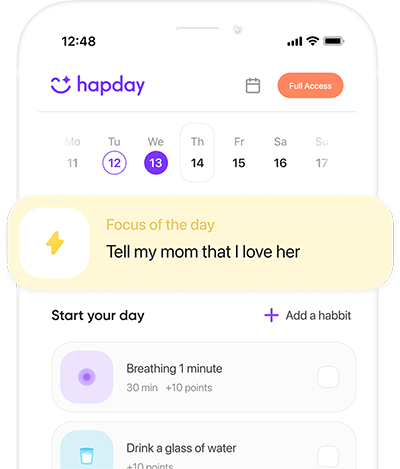Table of Contents
- Understanding Childhood Trauma
- Identifying Trauma Patterns
- Steps to Break Free
- Acknowledge and Accept
- Seek Professional Help
- Mindfulness and Meditation
- Build a Support Network
- Set Boundaries
- Practice Self-care
- The Importance of Patience and Persistence
- The Role of Affirmations and Positive Thinking
- Conclusion
Understanding Childhood Trauma
So, what exactly is childhood trauma? In simple terms, it’s those nasty experiences—can’t sugarcoat this—that kids just can’t get their heads around. Maybe it was something horrifying like witnessing violence or going through emotional neglect. The Journal of Traumatic Stress, back in… uh, 2021, I think, mentioned that around 60% of adults have this shadowy trauma hanging from their past. And yes, it can turn up like an unwanted guest as anxiety, depression, or relationship issues that just won’t quit.
Identifying Trauma Patterns
Spotting these darn patterns is like finding a needle in a haystack (a cliché, I know, but it fits!). You gotta remember, it’s the first step to healing. We’re talking about things like that relentless anxiety, or how you might fly off the handle over things others wouldn’t blink at. The American Psychological Association—a credible bunch—makes clear that childhood trauma can steer you toward PTSD alley, with a grim cocktail of re-experiencing trauma and a rather jumpy demeanor.
Emotional Reactivity
The tiniest spark could trigger a raging bonfire, emotionally speaking. And this kind of hyper-reactivity (boy, what a term) can make friendships and stress management a bit of a nightmare. Trust me, I’ve been there.
Self-sabotage
Ever found yourself messing things up on purpose? Whether it’s procrastinating or planting seeds of self-doubt, it’s like you’re your own enemy, thinking you don’t deserve nice things. Bizarre, isn’t it?
Steps to Break Free
Okay, now let’s roll up our sleeves. Breaking away from these patterns isn’t a walk in the park, and you’ll likely need some professional guidance. Here’s how you might start:
1. Acknowledge and Accept
Yep, it’s time to sit with these patterns. Acknowledge them. Accept them as snippets from your past, not your blueprint for tomorrow. This doesn’t mean you’re giving them a thumbs-up—it’s more about understanding.
2. Seek Professional Help
Ah, therapy. A lifeline, honestly. CBT or EMDR—if those acronyms mean anything to you—are highly recommended. The Journal of Anxiety Disorders, not too long ago, highlighted how CBT could slice through PTSD’s tangled web significantly.
3. Mindfulness and Meditation
Here’s where mindfulness waltzes in. Keeps you grounded, here and now. Doesn’t let the past jack into your present too often. The folks over at Psychological Science showed off a study proving mindfulness can literally reshape how your brain handles stress. Wild, right?
4. Build a Support Network
You need allies who get it—people who bolster you, not break you down. Whether it’s through friendships or group therapy sessions, having a camaraderie squad can banish that dreadful feeling of being all alone.
5. Set Boundaries
Say no when you need to. Seriously, it’s empowering. Drawing lines in the sand helps shield you from emotional harm and keeps bad vibes at bay.
6. Practice Self-care
Ever tried losing yourself in a hobby or taking that post-jog shower that feels like recharging your whole being? Self-care isn’t a luxury; it’s a necessity.
The Importance of Patience and Persistence
Rome wasn’t built in a day, and healing is no different. The National Institute of Mental Health (NIMH if you’re into acronyms) would agree that the road to recovery involves baby steps—and that’s perfectly okay. Celebrate the little wins; they stack up over time.
The Role of Affirmations and Positive Thinking
Here’s a nifty trick: talk kindly to yourself. Positive affirmations got a thumbs up from the crowd at the Journal of Personality and Social Psychology. They observed a rise in resilience and optimism with this practice. Give it a whirl; it might just turn the tide.
Conclusion
Wrapping it all up, breaking free from those deeply-rooted trauma patterns ain’t easy, but it’s within reach. With a dollop of acknowledgment, some professional assistance, and a steadfast commitment to self-care, you can lighten that childhood baggage—and believe me, it’s worth it. Don’t forget, each step you bravely take today plants seeds for a brighter tomorrow. Like, right now, you have the chance to explore the Hapday app and find a buddy for your journey to recovery.
Lending a hand on your mental health voyage? Tap into insights and tools over at Hapday to steer through your path to healing.

